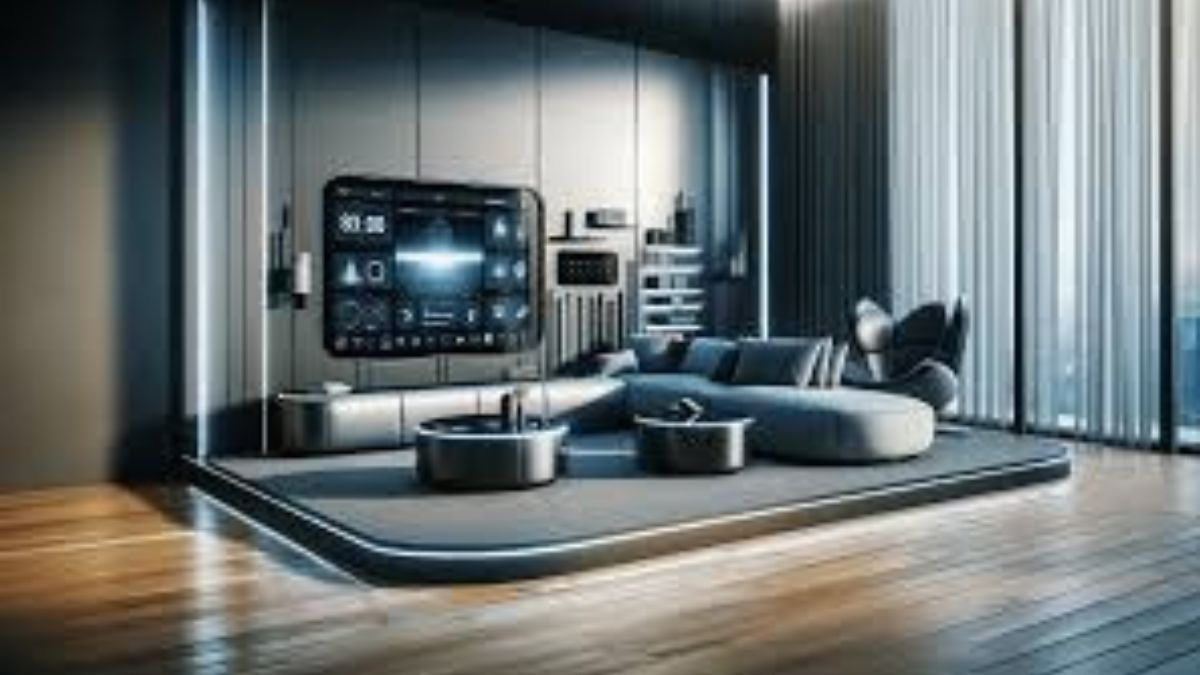The integration of smart living designs is revolutionizing the way we think about our homes. By combining technology and sustainability, modern designs offer not only convenience but also a reduced environmental footprint. With the growing popularity of these innovations, now is the perfect time to consider transforming your living space.
Smart living has rapidly gained traction as a pivotal trend in home design, driven by its promise of enhanced convenience, efficiency and sustainability. Today’s homeowners are increasingly seeking ways to incorporate technology into their living spaces, making their homes more functional and stylish. The fusion of smart technology with sustainable practices is transforming the traditional concept of home into a dynamic space that caters to modern lifestyles. This transformation is not just about adding gadgets, it’s about creating a holistic environment that supports energy efficiency and sustainable living.
Embracing smart technology in home design
The role of smart technology in home design cannot be overstated. It offers unparalleled convenience and plays a crucial role in enhancing both functionality and sustainability within your home. Luxury home builders are increasingly adopting smart innovations to create environments that are both cutting-edge and eco-friendly. From automated lighting systems to intelligent thermostats, these technologies help reduce energy consumption while maintaining comfort.
As you explore more options for integrating these technologies into your own home, you’ll discover a wide range of possibilities that can transform your living experience. Smart appliances, for example, can communicate with each other to optimize energy usage, while smart security systems provide peace of mind through real-time monitoring and alerts. The adoption of such technologies not only enhances the quality of life but also contributes to a more sustainable future by minimizing the carbon footprint of your household.
The integration of voice-controlled systems has become a game-changer in smart home design. These systems allow residents to control various aspects of their environment through simple verbal commands, from adjusting room temperatures to managing entertainment systems. Voice integration represents the next evolution in home automation, making technology more accessible to all family members, including children and elderly residents. This advancement has particularly transformed the way we interact with our living spaces, creating a more intuitive and responsive home environment that adapts to our daily routines and preferences.
Architectural integration of smart home technology
Architects are at the forefront of integrating smart technology into home designs, creating spaces that seamlessly blend innovation with aesthetic appeal. These technologies are embedded at various levels within projects. This integration goes beyond mere installation; it involves thoughtful planning to ensure that technology enhances rather than disrupts the home’s overall design.
Examples include open floor plans with centralized control systems that allow residents to manage lighting, heating, and entertainment from a single interface. Such designs prioritize user experience by ensuring that technological enhancements are intuitive and user-friendly. By focusing on architectural integration, designers are able to create environments where technology complements the natural flow and function of living spaces.
The rise of smart tiny homes
The emergence of smart tiny homes represents an innovative approach to sustainable living by maximizing space efficiency without sacrificing modern conveniences. These compact dwellings utilize intelligent design principles to offer all the amenities of larger homes within a much smaller footprint. This trend appeals to those looking for minimalist lifestyles without compromising on technological advancements.
Smart tiny homes employ space-saving solutions like multi-functional furniture and integrated storage systems while leveraging smart technology for climate control, security and energy management. These features not only enhance livability but also align with sustainable living goals by reducing resource consumption. As urban areas become more densely populated, smart tiny homes offer a viable solution for efficient urban living.
Sustainable and smart building practices
Sustainability remains a cornerstone of modern building practices, especially when combined with smart technology. These practices can significantly augment living environments by reducing environmental impact while enhancing comfort and efficiency. Building with sustainable materials and employing green building certifications are becoming standard practices in creating smart living spaces.
By embracing sustainable construction techniques alongside smart technologies, you contribute to a healthier planet while enjoying the benefits of an advanced home environment. For instance, using solar panels in conjunction with smart energy management systems allows homeowners to generate renewable energy efficiently. Such practices not only lower utility bills but also promote long-term ecological balance.
Innovative building designs for smart living offer exciting opportunities for transforming your home into a hub of modernity and sustainability. From integrating intelligent technologies to adopting eco-friendly construction methods, there are numerous paths you can take to create a smarter living space. As you consider making these changes, remember that each step toward innovation brings you closer to a more efficient and enjoyable lifestyle.

